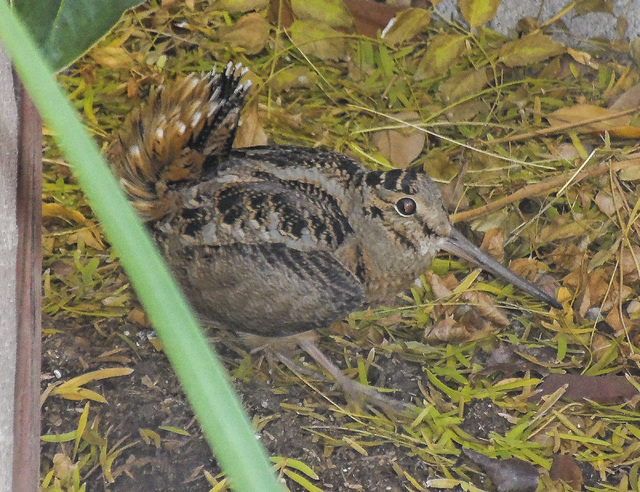Backyard visitor wows bird experts even in death
A bird almost never seen west of the Great Plains stopped in at a Las Vegas Valley home last month, but the unprecedented visit did not have a happy holiday ending.
The first known sighting of a live American woodcock in Nevada ended with the emaciated bird’s death just a few hours after it was captured and turned over to a local veterinarian.
“He barely survived the trip,” said Carrie Marques, director of animal wellness and education at Gilcrease Nature Sanctuary, where the quail-sized bird initially was taken for help Dec. 24.
She said the young adult male woodcock had almost no body fat, suggesting he was stressed and near starvation when he showed up Dec. 23 in the yard of a home in the Painted Desert neighborhood near U.S. Highway 95 and Ann Road.
The bird might have died in obscurity if not for the home’s owner, Brian Heilmann, who thought he recognized the species from his time as a military policeman in Leavenworth, Kan., some 40 years earlier. It was a long shot since the woodcock is rarely found west of Oklahoma and is almost unheard of west of the Rocky Mountains.
Heilmann said he was worried about his out-of-place visitor, so he sent pictures to everyone he could think of.
“The bird was kind of a sensation,” he said. “Nobody seemed to know what it was.”
He eventually got in touch with the folks at Gilcrease. They told him to catch it and bring it in, so he tossed a thin sheet of burlap over the bird and scooped it up.
“It’s a shame” the bird didn’t make it, Heilmann said, but he’s glad it landed in his yard and he got to see it.
The American woodcock has a plump body, short legs and a long, straight bill. Adult males tend to be less than a foot in length and weigh 5 to 8 ounces — or at least they do when they’re healthy. Heilmann said he was told his bird was seriously underweight.
The woodcock is common across the eastern United States, where it breeds from the Midwest to Canada and migrates as far south as the Gulf Coast in the winter. It is also a popular game bird, with roughly 500,000 taken by hunters each year.
How this one got to Las Vegas is unknown.
According to several local bird experts, the only other documented woodcock sighting in Nevada was a dead bird found near Ely in 1972. That bird came from a failed attempt to establish a game population in Northern California.
One theory is that the woodcock in Heilmann’s yard was blown off course by a storm during its winter migration or hitched a ride on a rail car or a hay truck. But at least one local expert said it’s more likely the bird simply got its internal compass scrambled and flew west instead of south.
“This is not woodcock country,” said John Hiatt, longtime conservation chairman for the Red Rock Audubon Society in Las Vegas.
“When birds are sighted in places that are completely out of their normal range, these sightings are termed ‘accidentals’ or ‘accidental sightings.’ ”
In the 1970s, for example, a red-legged kittiwake native to the Bering Sea turned up at Tule Springs in the northern Las Vegas Valley, where it was collected after it died and positively identified, Hiatt said.
“The bottom line is that birds can fly long distances, and sometimes their internal compasses get set wrong or they may be blown off course and out of their normal range by large storm systems,” he said. “Birds do fly. Amazing things can happen.”
Heilmann hopes his woodcock encounter will serve to remind people to keep their eyes open for wildlife in need of assistance. You never know what might turn up, he said, even in your own backyard.
Contact Henry Brean at hbrean@reviewjournal.com or 702-383-0350. Follow @RefriedBrean on Twitter.
How far?
See a Google map of the bird’s normal territory. Las Vegas is far from its usual path.
How did it get here? Take our poll below.



















